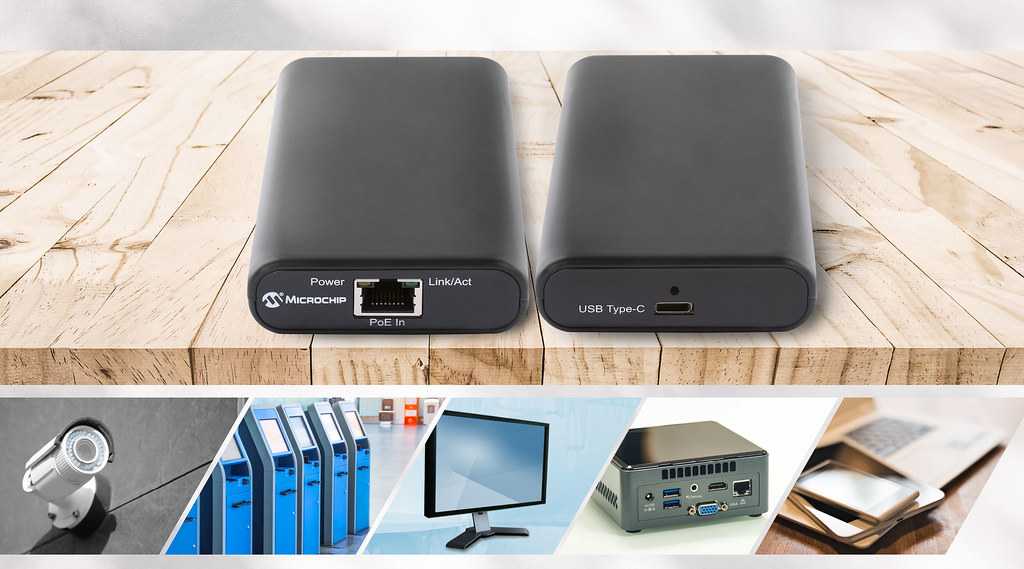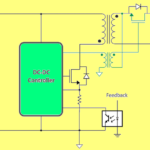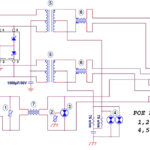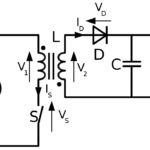 There are many consumer, enterprise, and industrial devices today that have a USB Type-C port as the only input power option. While USB-C technology can offer high power and high data rate, it limits the range of the installation to a maximum of three meters from an AC outlet. As Power over Ethernet (PoE) becomes more prevalent and a more convenient solution to provide power over a standard Ethernet cable, it is the most practical solution to provide both power and data up to 100 meters. While most adapters on the market provide only power, they provide only limited power up to 25W. Microchip Technology Inc. announced a PoE to USB-C adapter with the highest power capability that converts both power and data while offering up to 60W USB output power via an Ethernet cable supported by PoE infrastructure.
There are many consumer, enterprise, and industrial devices today that have a USB Type-C port as the only input power option. While USB-C technology can offer high power and high data rate, it limits the range of the installation to a maximum of three meters from an AC outlet. As Power over Ethernet (PoE) becomes more prevalent and a more convenient solution to provide power over a standard Ethernet cable, it is the most practical solution to provide both power and data up to 100 meters. While most adapters on the market provide only power, they provide only limited power up to 25W. Microchip Technology Inc. announced a PoE to USB-C adapter with the highest power capability that converts both power and data while offering up to 60W USB output power via an Ethernet cable supported by PoE infrastructure.
The adapter (part number PD-USB-DP60) can accept up to 90W of PoE and convert it to 60W output over USB-C that will power most cameras, laptops, tablets, and other devices using USB-C for input power. This adapter simplifies installation by reducing dependency on AC infrastructure. Without the dependency of an AC outlet, there is no longer a range limitation of three meters, and power can be delivered over 100 meters. This adapter also enhances the remote power management capabilities of the USB-C power device. The remote power reset capability, provided by the PoE source, allows power cycling via the web interface or Simple Network Management Protocol (SNMP) to reset the device, rather than having to manually unplug and restart at the location of the equipment.
Microchip’s PoE to USB-C adapter can connect to a variety of PoE sources with various standards deployed. It supports newer IEEE 802.3af/at/bt standards as well as legacy PoE standards. Having a versatile adapter is crucial due to the many different implementations of PoE already installed.
Having the capability of converting 90W input to 60W output enables devices requiring higher power charging to make use of PoE that could not have done so before. The adapter can be paired with Microchip’s cost-effective single-port and multi-port (up to 24) PoE injectors/midspans and switches that comply with IEEE 802.3af/at/bt industry standards and provide up to 90W power per port. If a lower power is needed to power the USB-C device, IEEE802.3af (15.4W) or IEEE802.3at (30W) PoE sources can be used.
Microchip also offers key integrated circuit solutions that enable the PoE to USB-C adapter, including the PD70xxx family of PoE ICs and the LAN7800 USB-to-Ethernet bridge. Functionality is enabled by Microchip’s Power Delivery Software Framework (PSF), an open-source Power Delivery (PD) stack that runs on the UPD301C PD controller and provides full PD 3.0 capability and customization for Microchip’s PD controllers, microcontrollers, and USB hubs.
The PoE to USB-C adapter is available now for $100.00 each.







Leave a Reply